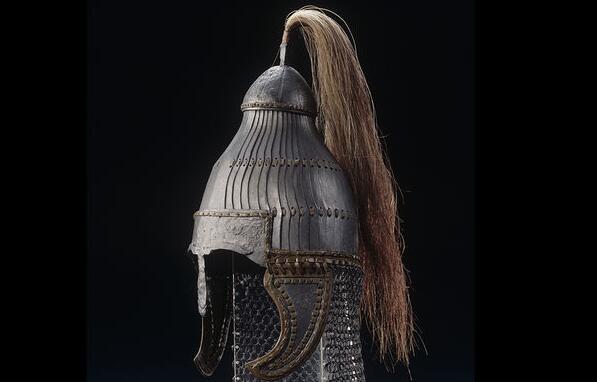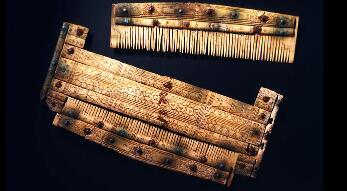1400-year-old warrior burial ground reveals German fighters came from near and far
In 1962, German construction workers stumbled on a rare site: a 1400-year-old burial ground, filled with ornate grave goods and the bodies of 13 warriors and children. But despite decades of study, no one knew how they died or where they came from. Now, a new analysis of their DNA and other chemical traces in their bones reveals that the medieval warriors were surprisingly cosmopolitan, with some born locally and others hailing from far-off parts of Europe. One possibility, though unproven, is that some of these outsiders were child hostages.
“It is a convincing [study],” says Alexander M?rseburg, a biological anthropologist at the University of Cambridge in the United Kingdom who wasn’t involved in the work. But he stresses that because the dead were clearly nobles, their lifestyle might not be a good stand-in for the rest of the local population.

This restored helmet was found among the graves of mysterious, high-ranking warriors who lived in southern Germany during the seventh century C.E.LANDESMUSEUM WÜRTTEMBERG, P. FRANKENSTEIN/H. ZWIETASCH
Scientists have long assumed the bodies—found near Niederstotzingen, Germany—came from a class of itinerant warrior-kings who belonged to a loose confederation of Germanic tribes called the Alemanni. These tribes, distantly related to the Goths, lived in Central Europe between the third and eighth centuries C.E., and frequently clashed with the Roman Empire. The gravesite, on a grassy plain near the Danube River, is the best preserved of their burial grounds. Inside, leather-stitched helmets and intricate swords, found alongside less warlike bronze buckles and finely carved hair combs, suggest it dates to about 600 C.E. or 700 C.E.
To find out who the dead were, a research team led by archaeologist Niall O’Sullivan, who at the time was working at the Eurac Research Institute for Mummy Studies in Bolzano, Italy, and who is now at the Max Planck Institute for the Science of Human History in Jena, Germany, applied next-generation sequencing methods to compile enormous amounts of genetic material from bone samples from the 13 buried individuals—10 adults, one infant, one toddler, and one child. One gracile young warrior, who some researchers had previously speculated might be female, turned out to be male. So did 10 of the 12 remaining bodies; the sex of the final two proved inconclusive. Five of the dead were directly related to one another, but seven were unrelated.

This decorated comb, carved from an antler, was found in a warrior’s grave in Niederstotzingen, Germany. LANDESMUSEUM WüRTTEMBERG, P. FRANKENSTEIN/H. ZWIETASCH
Curiously, three people buried in the same grave—usually an indication that the deceased belonged to the same household—weren’t related. The DNA of one suggested northern, eastern, and central European stock, whereas the other two had DNA pointing to a southern European origin, possibly the Mediterranean. When researchers analyzed the chemical isotopes inside those individuals’ teeth—biochemical markers that can identify where a person was raised—they found that only one of the two likely grew up in the Niederstotzingen region. That suggests, the researchers write today in Science Advances, that these warriors welcomed foreigners into their households.
One explanation for such a seemingly cosmopolitan worldview: hostage taking. “Folklore from the time has tales of tribes exchanging hostage children that are raised as their own,” O’Sullivan explains. If some of the dead had been brought north as child hostages, they would have been brought up as warriors by their adoptive tribes, he says. Yet they could also be pawns in intertribe negotiations when alliances were called into question.
M?rseburg says the “treaty hostage,” hypothesis is plausible, though he stresses that a single instance can’t reveal whether the practice was widespread. It’s also difficult to tell just how open the rest of the region’s culture was to outsiders, given that most well-preserved bodies come from noble stock. He says he’d like to see ancient DNA studies in the region explore the genetic origins of commoners, as well.
One mystery is likely to remain unsolved for some time: How the warriors died. The bodies bear no obvious signs of fatal trauma or disease. Because the site at Niederstotzingen had been occupied when the deadly Plague of Justinian swept through Europe, some have wondered whether the warriors died from the disease. Yet researchers found no DNA markers matching the plague bacteria, Yersinia pestis, leaving the dead with that secret intact.

